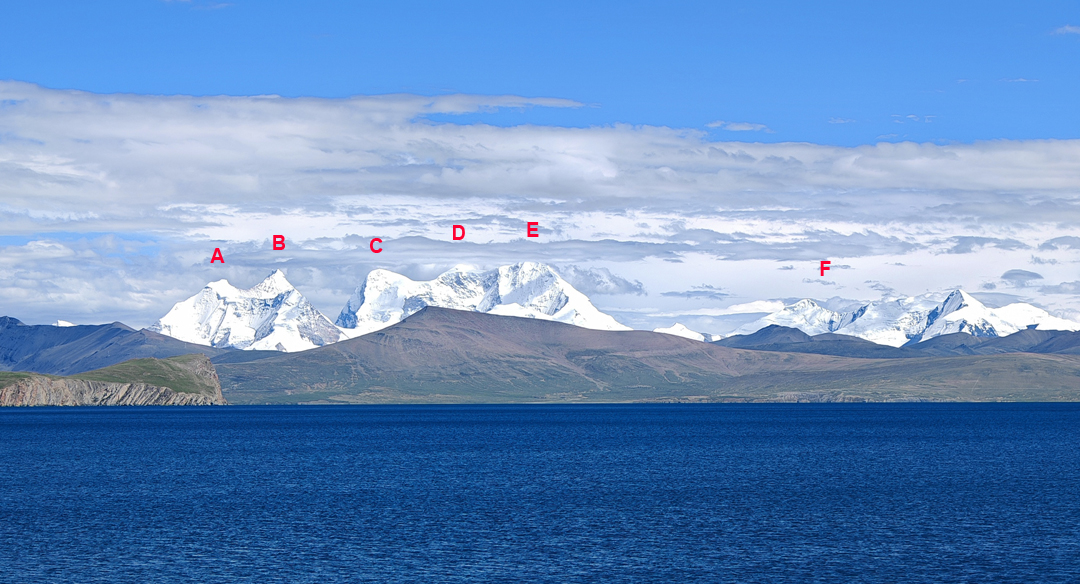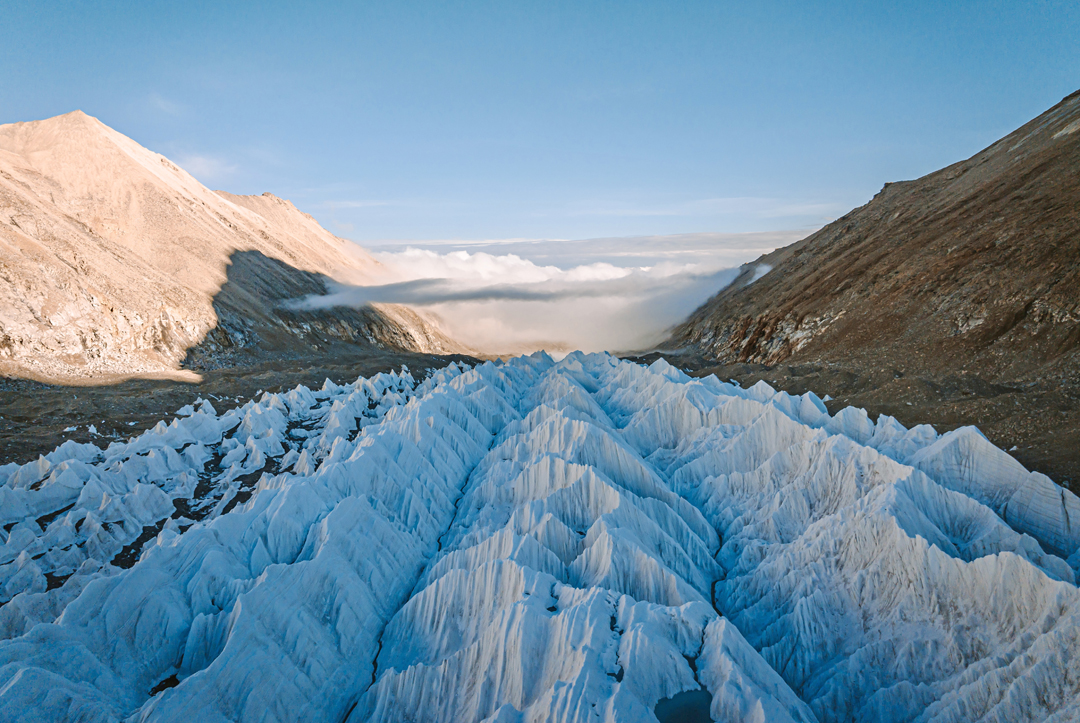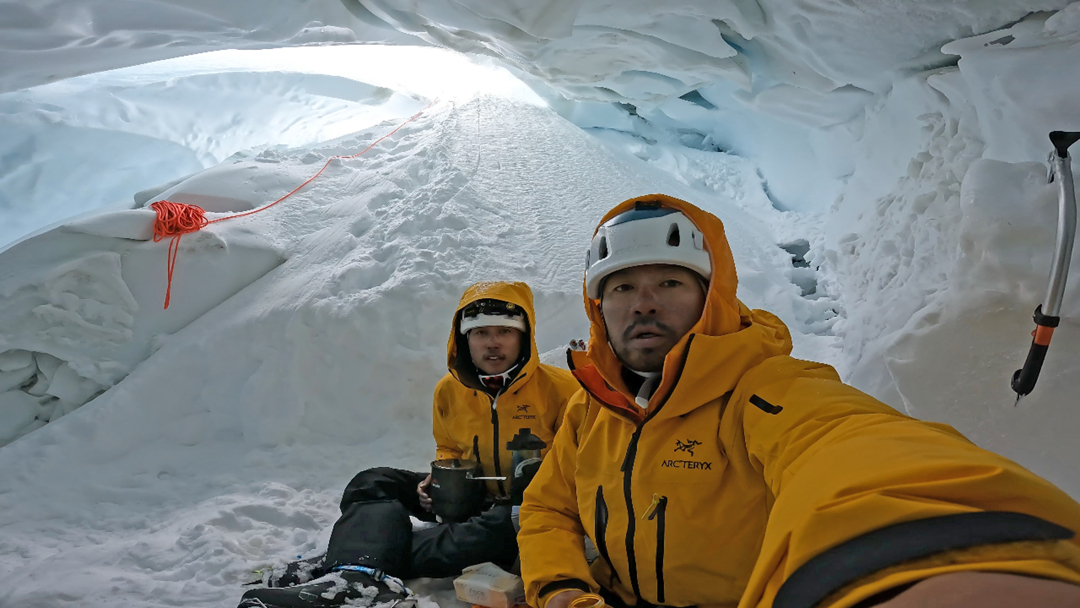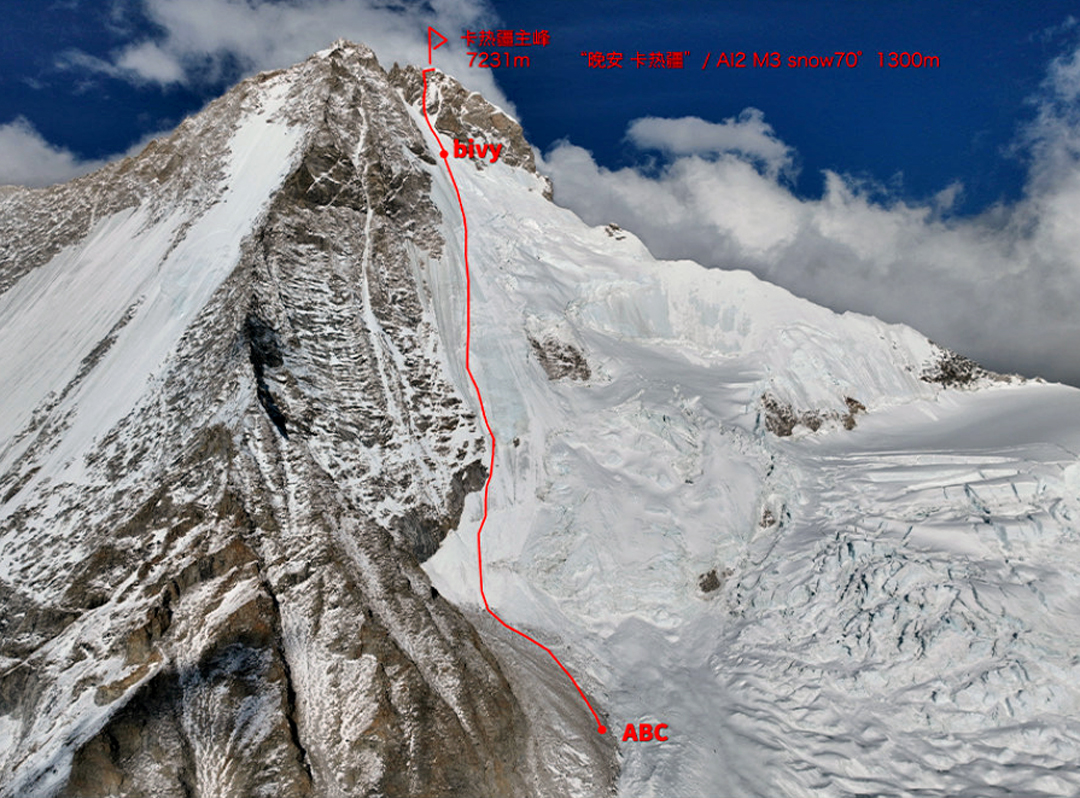Karjiang, First Ascent, via Southwest Face
China, Tibet, Himalaya
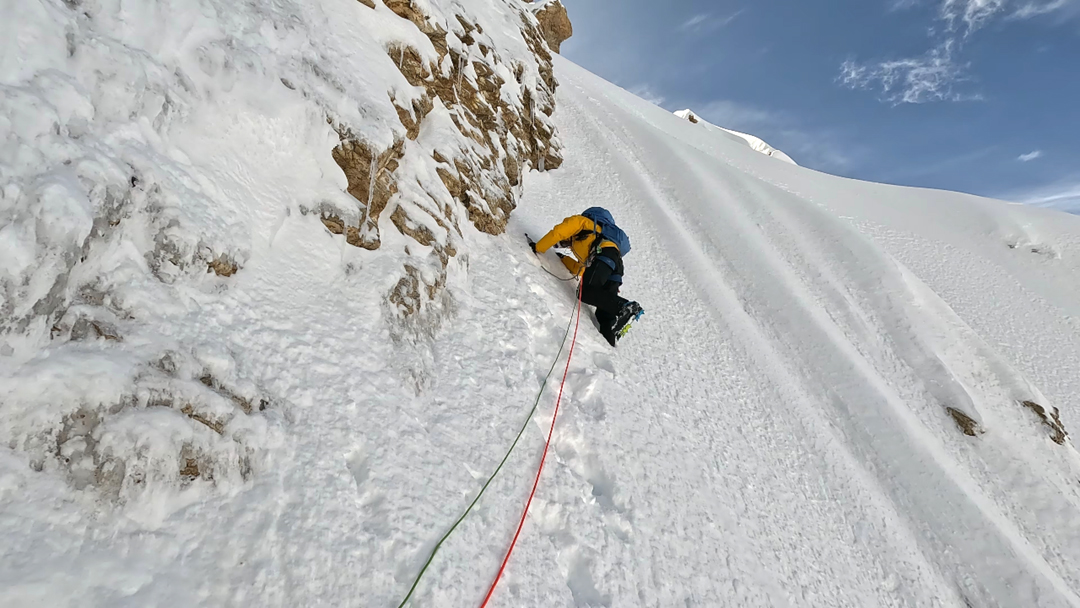
By his definition of a mountain versus a subsidiary top, mountaineering statistician Eberhard Jurgalski lists the Himalayan peak Karjiang (7,221m, 28°15’36.94”N, 90°38’41.94”E), near the Tibet-Bhutan border, as the 97th-highest mountain in the world. Of the unclimbed main summits on this list, only Apsarasas Kangri I (7,243m), Lapche Kang II (7,250m), and Gankar (Kankar) Punzum (7,575m) were higher. On August 13, Karjiang left the “unclimbed” list, as Chinese alpinists Liu Yang and Song Yuancheng stood on the summit after a three-day climb.
The Karjiang group and nearby Kula Kangri massif stand about 165km southwest of Lhasa. A team from Japan climbed the main summit of Kula Kangri (7,554m) in 1986, and the east and central summits fell to another Japanese expedition in 2002. Karjiang has three summits: a south or main peak; a central peak (Karjiang II, 7,216m); and a northwest peak (Karjiang III, or Taptol Kangri, 6,824m). Japanese climbers attempted the main summit in 1986 (a different expedition from the one above) but found it too difficult; they then made the first ascent of Karjiang II via the northwest ridge. A Dutch team also tried the west face of the main summit in 2001, failed, and climbed Karjiang III.
Liu Yang had been attracted to Karjiang for several years, but as a university lecturer, he only had the summer holidays of July and August available for expeditions—not an ideal season for attempting this mountain. Nonetheless, Liu and Song Yuancheng, with a photographer and two hired staff, arrived in Lhasa in mid-July, and on the 24th they trekked up the glacier flowing north from the Kula Kangri and Karjiang groups to reach a base camp at 5,800m. It was lower than they wanted, but the porters would go no farther. Their subsequent reconnaissance proved unfruitful, as the upper mountain was shrouded in cloud. Some of the team suffered from altitude illness, so they all returned to Lhasa.
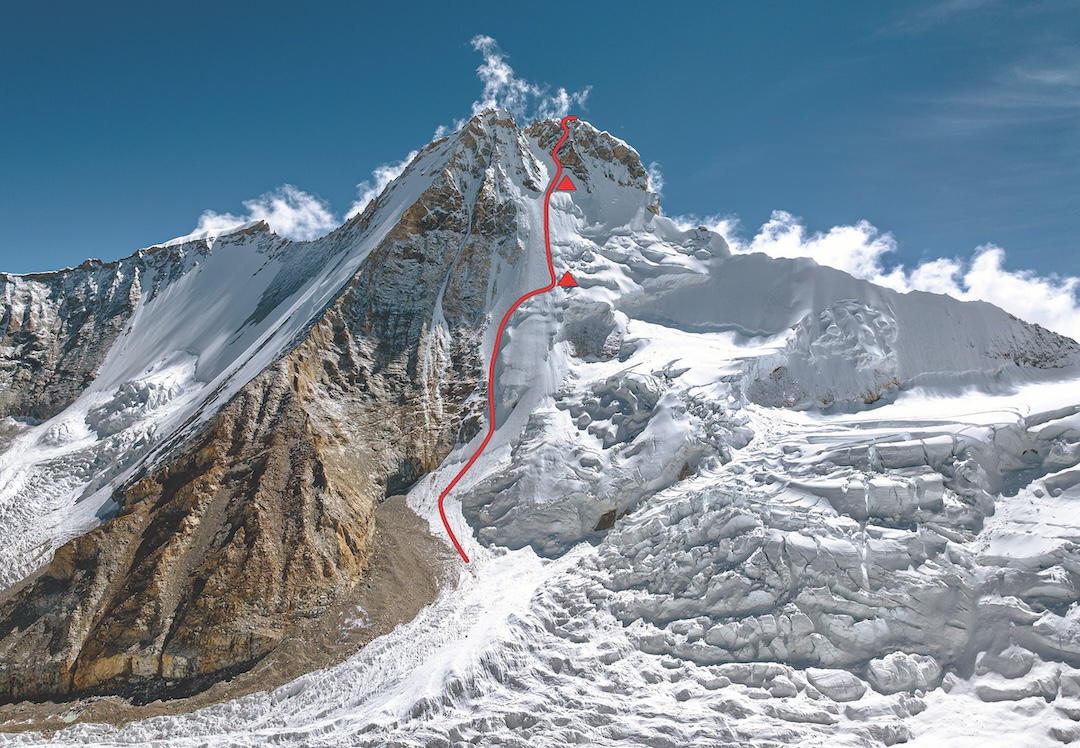
On July 30, the team was back in base camp. Starting out at around noon the next day, Liu and Song climbed up the southwest face of Karjiang and camped beneath a serac at 6,350m. On August 1, they reached 6,650m and camped again beneath a serac. An overnight storm dropped one meter of fresh snow, but the following day the two continued upward for another 250m, then spent two hours cutting a tent platform. Again, it snowed all night, and, experiencing headaches the following morning, the two descended to base camp.
Back in Lhasa for another rest, they felt convinced they could climb the face with a three-day weather window. Their best option proved to be around August 11–12, when only eight centimeters of snow was forecast to fall.
After returning to base camp on the 10th, they set off at 2:30 the following morning and started up the southwest face at 5 a.m. This time they chose a line close to the rock wall left of their previous attempt. They simul-climbed to 6,550m—the first part comfortably icy, the second through deep snow—and used a small, natural ice cave for a bivouac site. It was too small to pitch the tent, so they slept with the tent fly draped over them.
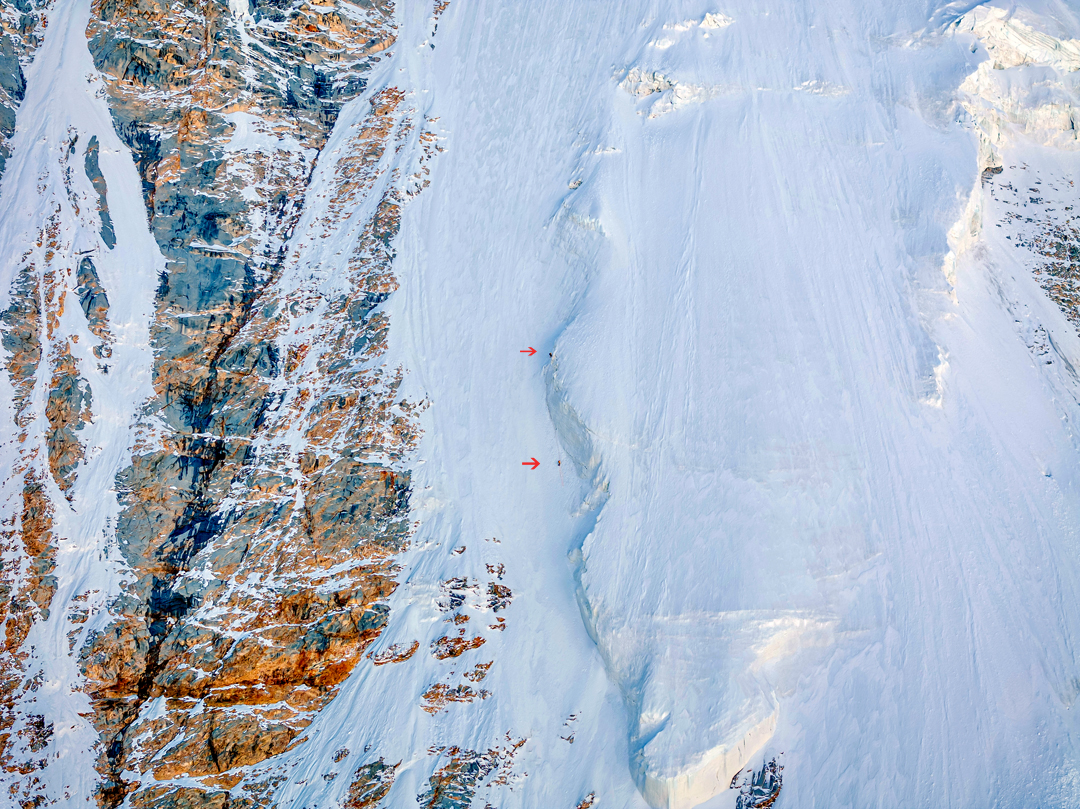
Snow fell overnight but stopped at 5 a.m. on August 12, and they climbed to a large crevasse under a serac at around 6,900m. Again, they were forced to sleep with the flysheet draped over them, as the tent poles broke due to the cold. The next morning, they left their gear and climbed 100m to reach loose mixed terrain with unreliable protection. By 2 p.m. they had gained the summit ridge, where they turned right and moved together for 55 minutes to the highest point.
Starting the descent of their route in a whiteout, they were unable to find ice for the first rappel and resorted to a buried pack lid as a makeshift snow anchor. Four rappels from Abalakov anchors in thin ice, followed by difficult downclimbing, got them back to their high bivouac site under the serac. They were exhausted but opted to continue. Following their ascent route down proved difficult in snowfall and bad visibility, and from time to time they were hit by spindrift avalanches. However, at 5 a.m. on the 14th, they made it to the glacier.
The moraine below was now covered in more than half a meter of fresh snow, and they were forced to crawl down it. They reached base camp at 9:30 a.m., having taken 4.5 hours to cover 1.5km. The snow had prevented porters from returning to base camp, so the two climbers left their gear for later collection and continued down to meet their friends, who drove them to Lhasa. They arrived there at 4:30 a.m. on August 15, just in time for their flights home. Their 11th-hour success prompted them to choose the route name Buzzer Beater (1,300m, AI3 M4 70° snow).
—Xia Zhongming, with information from Liu Yang, China
Second Ascent of Karjiang: One month after the first ascent of Karjiang, Huang Siyuan and Tong Zhanghao made the second ascent in September 2024 by a slightly more direct line in a two-day round trip from the foot of the face. The two parties had independently planned attempts on the mountain, but Liu, as a university lecturer, was forced to climb in the summer, during the monsoon season, whereas as Huang and Tong, as professional mountain guides, could make their attempt during the more stable conditions of September. They set up an advanced base at 5,900m and took one day's rest. Leaving at 3:30 a.m. on September 9, they simul-climbed to their planned bivouac site at 6,900m. It was only 1 p.m., but they decided to stop and set up an open bivouac, where they eventually slept until midnight before leaving for the summit. Deep, soft snow slowed progress, but they still reached the summit just before 4 a.m., then descended the same day.


